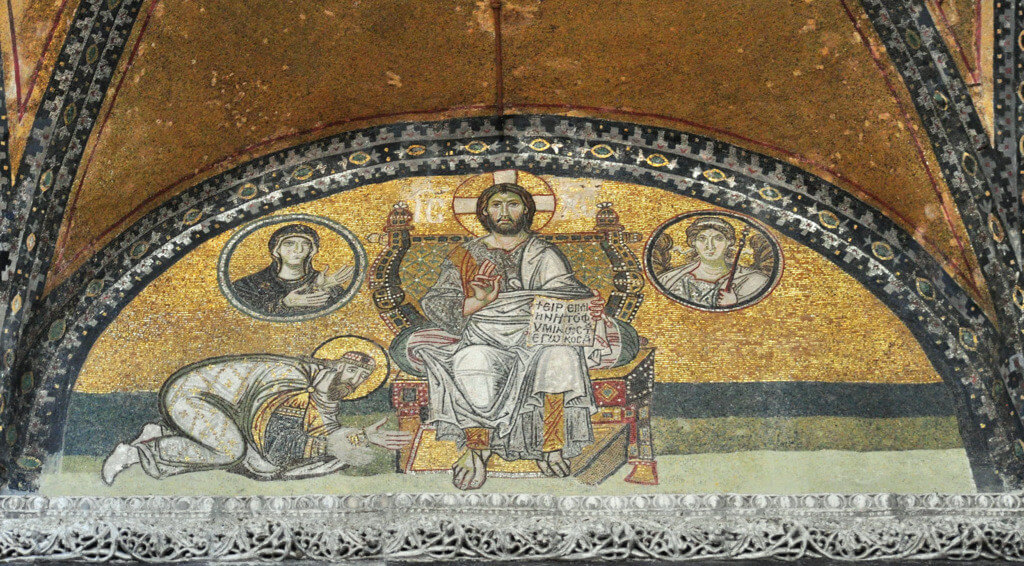By Tasos Kokkinidis
Following Turkey’s decision to annul the 1934 conversion of Constantinople’s Hagia Sophia into a museum, paving the way for its reconversion into a mosque, questions are asked about the fate of numerous mosaics that decorate several of its interior walls.
Many social media users are expressing horror at the thought of Hagia Sophia being turned into a mosque, with the ancient mosaics would be covered up — or even worse — removed.
Turkey’s daily Hurriyet reported that the mosaics will be covered up with specially-designed curtains during Muslim prayers and that visitors would be asked to take off their shoes before entering, as is the case with all mosques.
The original mosaics were not destroyed by the Ottoman conquerors but merely covered up when the city was captured in 1453. When Hagia Sophia was converted into a museum, they were uncovered so that visitors would enjoy them.
Some of the mosaics in Hagia Sophia are considered masterpieces, and they serve as a catalogue of Byzantine art. The motifs used in the creation of the mosaics were mostly imperial portraits and images of Christ.
Among them is the “Mosaic of the Apse,” completed during the 9th century, which decorates the half-dome located behind the altar. It is a representation of Virgin Mary sitting on a backless throne, with the baby Jesus seated on her lap.
It is set against a gleaming golden background to create a strong contrast with the dark color of her clothing.

Another masterpiece is the “Pantakrator” mosaic decorated with the figure of Jesus, located on the top of the Imperial Gate. It shows Jesus blessing the world with his right hand and carrying the scriptures in his left hand.
The following Greek words are written on the Bible: “May Peace Be with You. I Am the Divine Light.”
The world famous “Deesis” mosaic, which is regarded as the beginning of a renaissance in Byzantine art, is located on the western wall of Hagia Sophia’s Northern Gallery.
John the Baptist is portrayed on the right side and the Virgin Mary on the left side of Jesus, who is in the middle in this important piece of Byzantine art.










